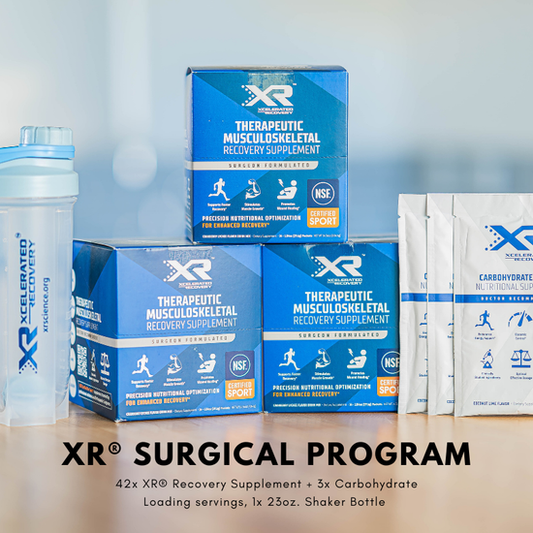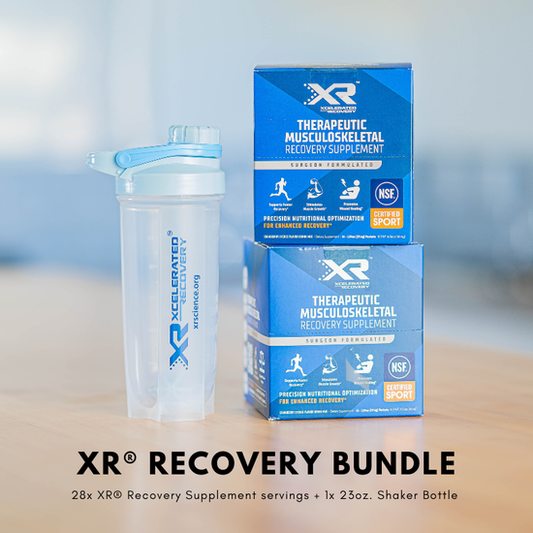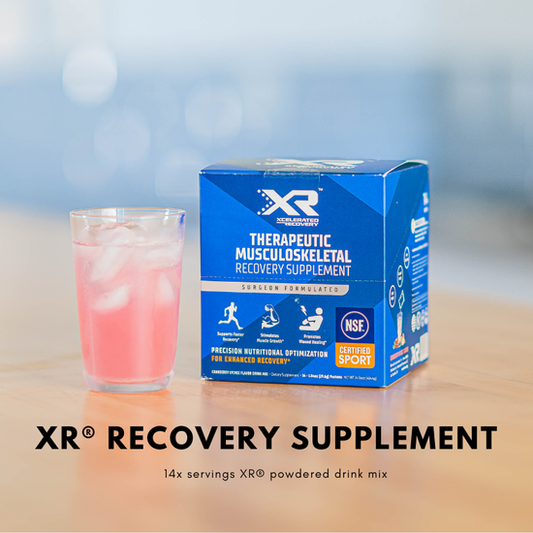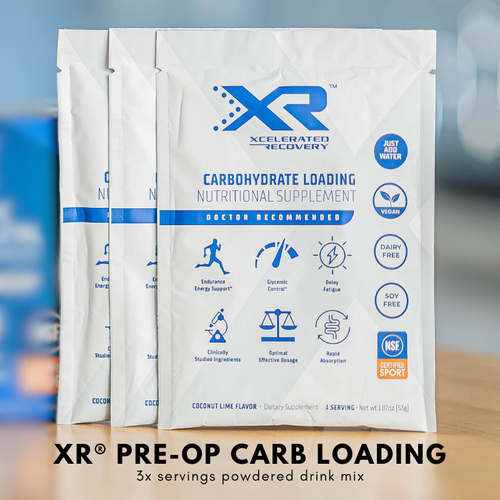
The Role of Fructosamine in Orthopedic Surgery
Share
Author: XR® Research Team
The Role of Fructosamine in Orthopedic Surgery: Advancing Glycemic Monitoring for Better Outcomes
Perioperative glycemic optimization is critical for minimizing complications in orthopedic surgery, particularly in total joint arthroplasty (TJA). While glycated hemoglobin (HbA1c) has been the traditional benchmark for glycemic assessment, its limitations in detecting short-term glucose fluctuations have led to increased interest in fructosamine as a more dynamic and sensitive marker of glycemic control. Emerging evidence highlights its utility in predicting adverse outcomes, such as infections and complications post-surgery, making it a valuable tool in preoperative optimization.
Sensitivity and Predictive Power
Fructosamine reflects glycemic control over a shorter period (2–3 weeks) compared to HbA1c, which measures over 2–3 months. This shorter reflection window is crucial in the perioperative period, where immediate glycemic control impacts surgical outcomes. Studies have demonstrated that elevated fructosamine levels are significantly associated with adverse events, including periprosthetic joint infections (PJIs), readmissions, and reoperations following total joint arthroplasty (1,6).
Advantages of Fructosamine in Orthopedic Preoptimization
- Shorter Half-Life: Fructosamine's shorter half-life makes it sensitive to recent changes in glucose control. This is particularly beneficial in preoperative settings, where rapid adjustments in management are often required.
- Detection of Recent Poor Control: Fructosamine can identify "false negatives" that might occur with HbA1c. For example, a patient may have an acceptable HbA1c level reflecting good glucose control over three months, but recent deterioration may not be captured. Fructosamine, with its shorter window, provides a more accurate picture of recent changes.
Key Findings and Statistics
- Total Joint Arthroplasty (TJA): A study involving 829 patients showed that those with fructosamine levels ≥292 µmol/L had a significantly higher risk of deep infections (adjusted OR, 6.2; p=0.009), readmissions (adjusted OR, 3.0; p=0.03), and reoperations (adjusted OR, 3.4; p=0.02) (1,6).
- Total Hip Arthroplasty (THA): A multi-center study with 1212 patients found that individuals with fructosamine levels >293 µmol/L were 6.7 times more likely to develop PJIs (p=0.002) and had significantly higher readmission rates (16.7% vs. 4.4%, p<0.007) (2,5).
-
Total Knee Arthroplasty (TKA): Patients with fructosamine levels >293 µmol/L were 11.2 times more likely to develop PJIs (p=0.001), with significantly higher rates of readmission and reoperation (1,3).
Comparison with HbA1c
Fructosamine has consistently shown superior predictive power compared to HbA1c for adverse surgical outcomes. HbA1c often fails to correlate with complications such as infections and readmissions, whereas fructosamine reliably identifies patients at risk (1,5,6). Additionally, a 2024 study highlighted a 19.7% prevalence of “pseudo-controlled diabetes” among TJA patients, where patients with acceptable HbA1c but abnormal fructosamine levels experienced worse outcomes, including septic complications and extended hospital stays (4).
Fructosamine offers several clinical advantages:
- Timely Glycemic Monitoring: Its 2–3-week window provides a more immediate snapshot of glycemic control, essential for preoperative planning and optimization.
- Enhanced Risk Stratification: By detecting short-term glycemic variability, it enables better identification of high-risk patients.
-
Cost-Effective Tool: Fructosamine testing is affordable and easily implementable, enhancing its utility in routine orthopedic care.
Conclusion
The integration of fructosamine testing into perioperative protocols is a transformative step in optimizing outcomes for orthopedic surgery. By offering a more sensitive and predictive snapshot of glycemic control, fructosamine bridges the gap left by traditional markers like HbA1c, empowering healthcare providers to make timely, data-driven decisions. Its proven predictive power for adverse outcomes such as infections, readmissions, and reoperations highlights its value as a reliable tool in preoperative risk stratification.
As the evidence mounts, fructosamine testing should become included in perioperative management in total joint arthroplasty and beyond. Its affordability, ease of implementation, and sensitivity to short-term glucose fluctuations make it a practical addition to routine clinical care. By embracing this advancement, orthopedic teams can improve patient outcomes, reduce complications, and set a new standard in surgical precision.
Looking ahead, future research exploring the application of fructosamine screening l in procedures such as spine surgery and rotator cuff repairs, will further enhance its impact on perioperative care. This evolution signals a shift toward precision medicine, ensuring that each patient receives tailored interventions for the best possible surgical outcomes.
References
- Shohat N, Muhsen K, Gilat R, Rondon AJ, Chen AF, Parvizi J. Inadequate glycemic control is associated with increased surgical site infection in total joint arthroplasty: A systematic review and meta-analysis. J Arthroplasty. 2018;33:2312-2321.e3.
- Shohat N, Tarabichi M, Tan TL, et al. 2019 John Insall Award: Fructosamine is a better glycaemic marker compared with glycated haemoglobin (HbA1c) in predicting adverse outcomes following total knee arthroplasty. Bone Joint J. 2019;101-B(7_suppl_C):3-9.
- Shohat N, Goswami K, Breckenridge L, et al. Fructosamine is a valuable marker for glycemic control and predicting adverse outcomes following total hip arthroplasty: A prospective multi-institutional investigation. Sci Rep. 2021;11:2227.
- Çetik RM, et al. Predictive value of different glycemic control markers in total hip or knee arthroplasty: A prospective study. Acta Orthopaedica et Traumatologica Turcica. 2023;57:289-293.
- Govindan NO, et al. Glycemic Markers in Operative Orthopaedics - Is Fructosamine Better than HbA1c? 2020;9:1-12. https://doi.org/10.35248/2161-0533.2020.9.279.
- Tischler EH, Lizcano JD, Shohat N, et al. The association of glycemic control medication regimens and preoperative fructosamine among total joint arthroplasty patients. J Am Acad Orthop Surg. 2024;00:1-9.








